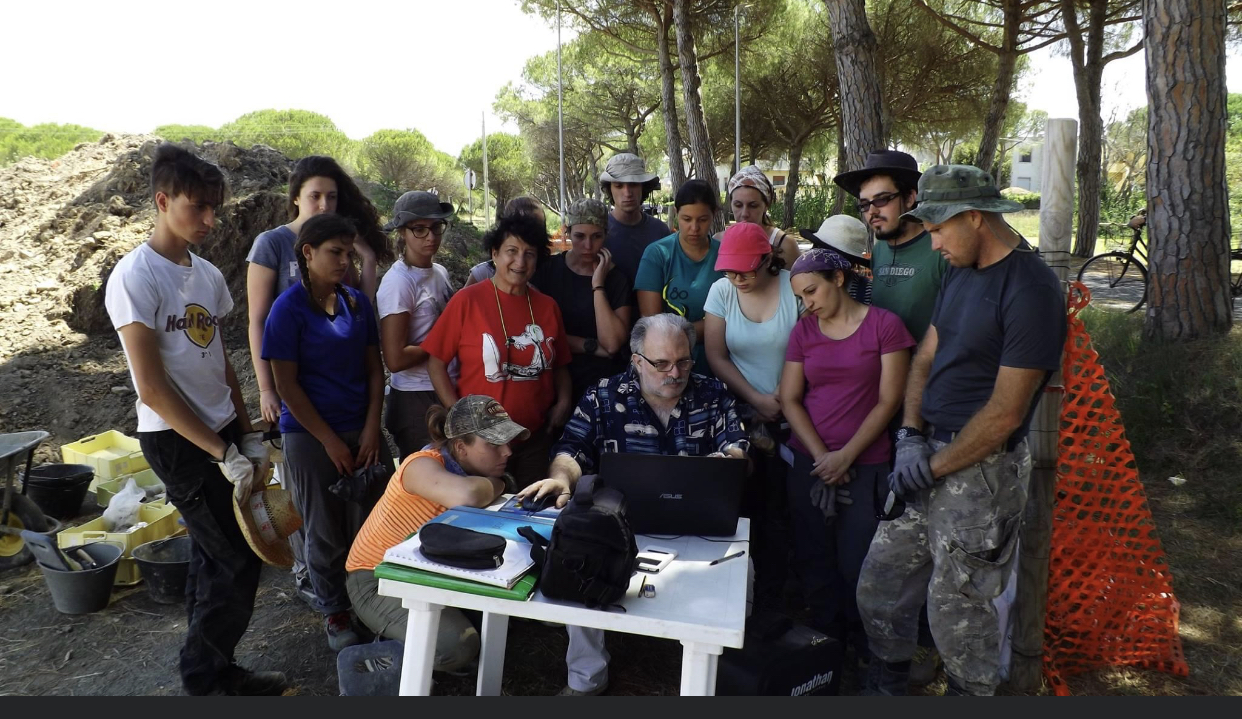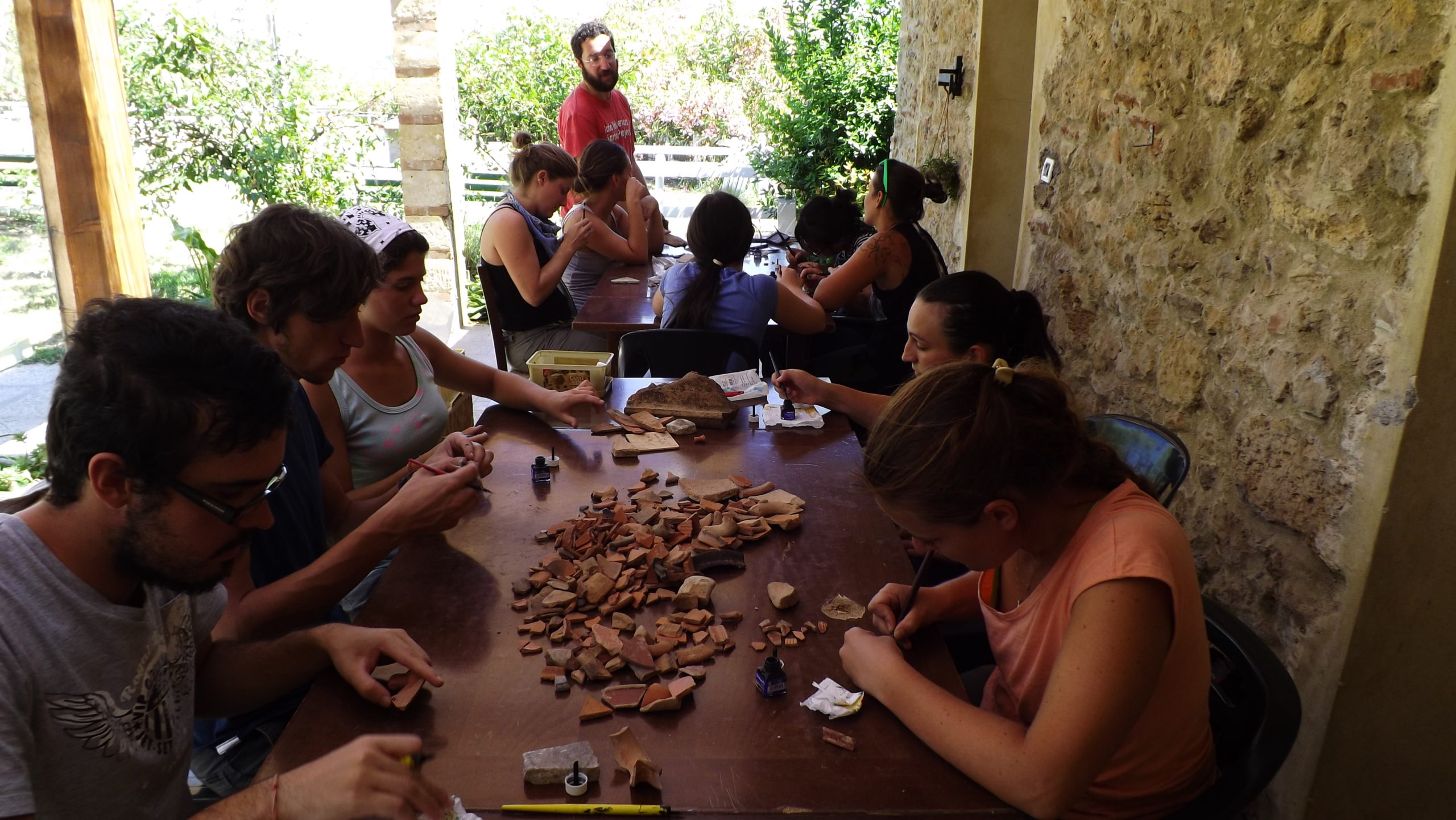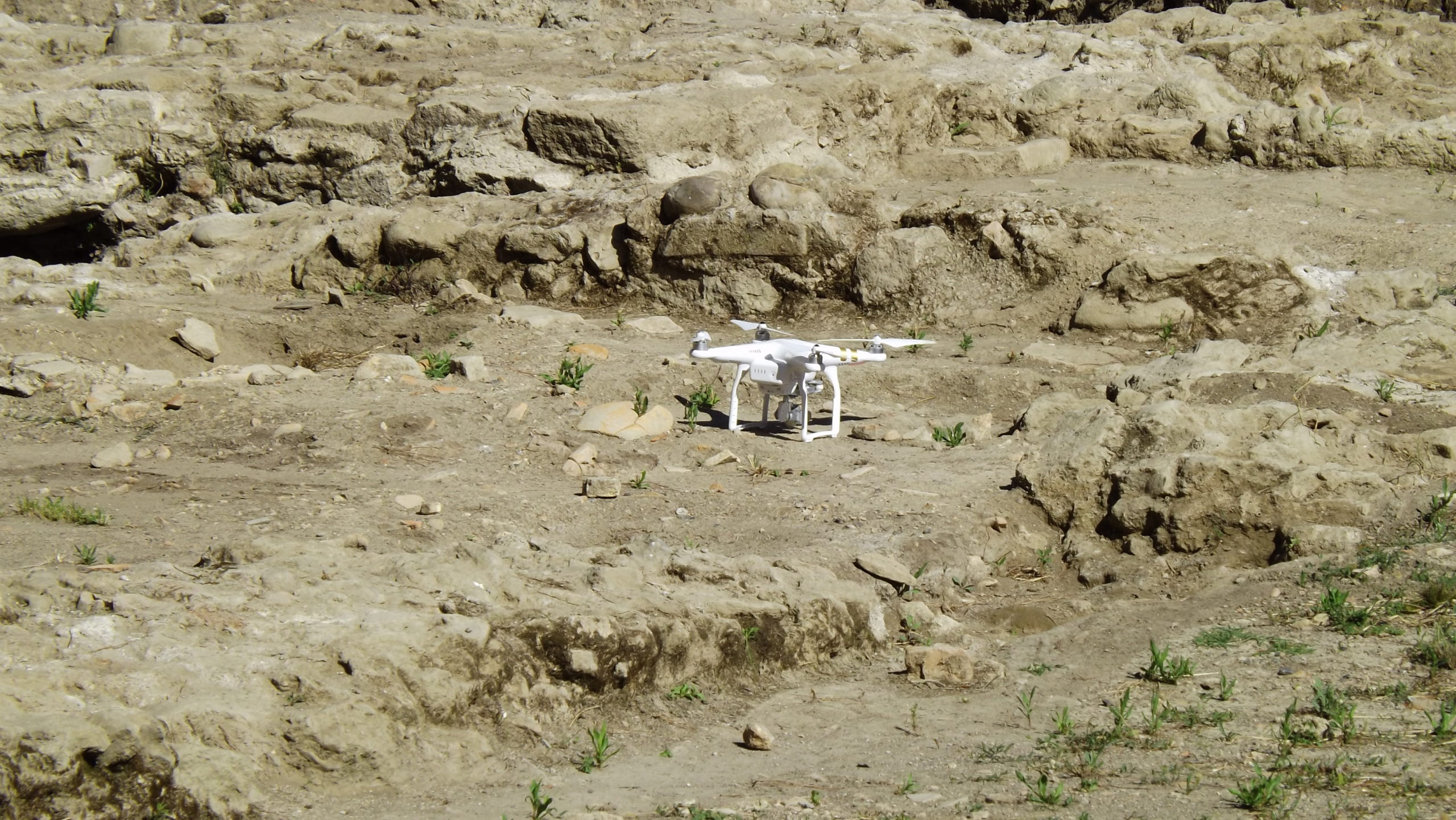
Together with carrying on scientific researches, training students is the main aim of our project; during their three weeks at the Summer School, students will experience all the different activities of an archaeologist. Practical, hands-on experience in the field will be complemented by laboratory activities and lectures with a strong focus on the history and archaeology of the harbour of Vada Volaterrana and its surroundings. Moreover classes will deal with excavation techniques, pottery and material culture, anthropology, archaeobotany, underwater archaeology.
Student will be constantly followed and guided in the following activities:
– Excavation of a new sector of the Vada Volaterrana settlement,
– GPR (Ground Penetrating Radar) Lab,
– Pottery Lab,
– Anthropology Lab,
– Flotation Lab,
– Underwater archaeology (theory).
 Lectures will include a visit to the Archaeological Museum in Rosignano, where the most important findings from Vada Volaterrana (e.g. the marble statue of the oriental god Attis) are preserved.
Lectures will include a visit to the Archaeological Museum in Rosignano, where the most important findings from Vada Volaterrana (e.g. the marble statue of the oriental god Attis) are preserved.
The staff will be available at all times to clarify anything and assist where necessary.
Daily schedule
 Activities will take place from Monday morning to Friday afternoon, between 8:30 am and 5:00 pm, with a lunch break (1:00-2:00 am).
Activities will take place from Monday morning to Friday afternoon, between 8:30 am and 5:00 pm, with a lunch break (1:00-2:00 am).
Laboratories will be held regularly in parallel with the excavation. Such activities will be held on the field, or at the lodging, accordingly to operational needs and weather conditions.
 Excavation, laboratories and lectures will not be held on weekends; so the students will have the opportunity to enjoy their stay in Italy. Students are welcome to take sightseeing trips to other cities, provided that they inform the instructors of their whereabouts and travel times.
Excavation, laboratories and lectures will not be held on weekends; so the students will have the opportunity to enjoy their stay in Italy. Students are welcome to take sightseeing trips to other cities, provided that they inform the instructors of their whereabouts and travel times.
At the end of the working day students will have time to have a shower and relax in the wonderful countryside of Tuscany. Dinner is served at 8:00 pm.
Timetable
| What | When | Where |
| Breakfast | 8.00 a.m. | At the lodging |
| Rendez-vous at the meeting point and departure for the site | 8,30 a.m. | From lodging to the field |
| Field activity | 9.00 a.m. | On the field |
| Lunch time | 13.00 a.m. | On the field |
| Field activity | 2.00 p.m. | On the field |
| Time to get back to the lodging | 5.15 p.m. | From the field to the lodging |
| Free time | 5.15-8.00 p.m. | At the lodging |
| Dinner | 8-9.30 p.m. | At the lodging |
| Free time | 9.30 p.m.— | At the lodging |
Fees:
The fees include transport to and from the site, housing, meals, excavation, laboratory equipment, and staff costs. Fees are payable in full upon admission.
Meals will be provided by the organization and will consist in breakfast (coffee, cappuccino, or tea with biscuits or croissants), packed lunch (sandwiches, a bottle of drinking water, and fruits), dinner at the lodging (pasta, and a second Italian course); drinking water is included; participants could ask for wine and/or other drinks, but have to pay for them separately. For any other need, a supermarket is located nearby (1,4 km): students can reach it by foot, or ask the staff to be brought there by car; if possible, the staff will be happy to help but remember: it is not a taxi service! 😉
International travel to Italy is not included in the fees.
After June 22, 2026 fees will not be refunded.
In the nearby…
Every week the Summer School’s activities will stop on Friday; Saturday and Sunday are days off. The staff and the participants will meet again at dinner on Sundays.
The weekend could be used for rest or trips in the surroundings.
From the railway station of Rosignano-Solvay, you can take trains to Pisa, Florence, Lucca, and Rome.
In 40 minutes, you can reach Pisa and its Leaning Tower. The city has Etruscan origin and was very important in Roman age, but the most remarkable monuments you can visit today belong to the Middle Ages, when Pisa was a powerful maritime republic. In Piazza dei Miracoli you can visit the Leaning Tower, the cathedral, the baptistery and the cemetery – a complex built between the 11th and 14th centuries.
In one hour and a half, changing at Pisa, you can reach Lucca, a medieval town, defended by its imposing (and wonderful) walls à la moderne. The city walls were built to defend the city after the introduction of firearms; on top of them an avenue runs all around the city: you could have a scroll there!
In two hours, you can reach Florence. It’s one of the most beautiful cities in Italy, full of monuments and masterpieces of Renaissance art. From the railstation in Florence you can easily reach Piazza della Signoria, the Uffizi Gallery, and the beautiful Giardino di Boboli, an Italian garden built by the Medici family in the 16th century in the very heart of the city.
In three hours, you can also reach Rome, a city that does not need any further comments!
Pisa Tourist Office: http://www.comune.pisa.it/turismo/
Florence Tourist Office: http://www.firenzeturismo.it/
Lucca Tourist Office: http://www.comune.lucca.it/Turismo
Rome Tourist Office: http://www.turismoroma.it/
Volterra Tourist Office: http://www.comune.volterra.pi.it/flex/cm/pages/ServeBLOB.php/L/IT/IDPagina/54
Trains informations: http://www.trenitalia.com/
Bus informations: http://www.atl.livorno.it/
